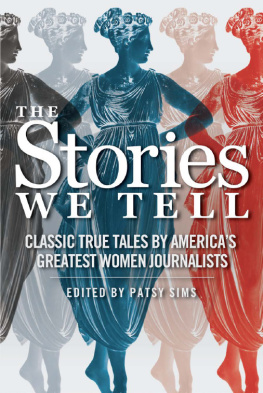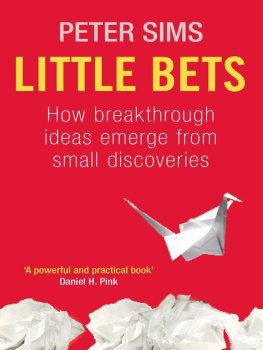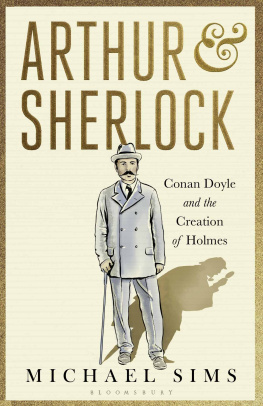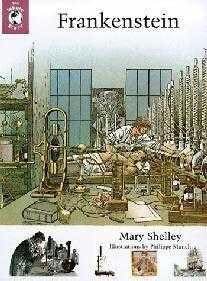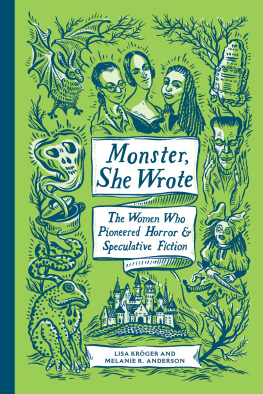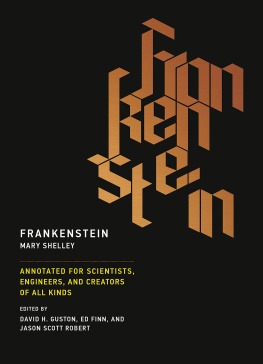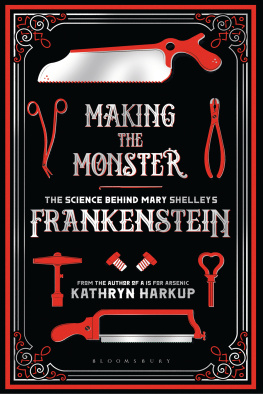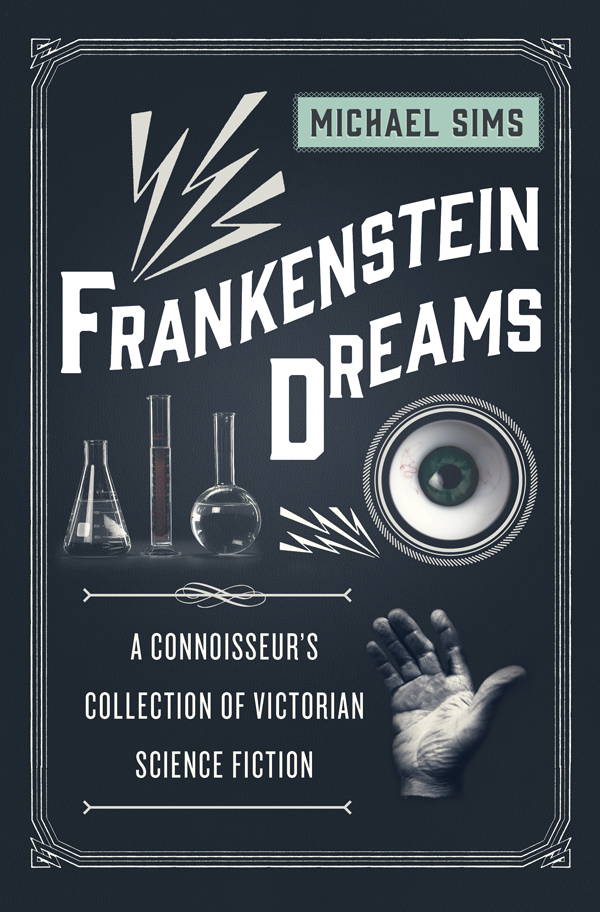Contents
Guide
Pagebreaks of the print version


BY THE SAME AUTHOR
NONFICTION
Arthur and Sherlock: Conan Doyle and the Creation of Holmes
The Adventures of Henry Thoreau: A Young Mans Unlikely Path to Walden Pond
The Story of Charlottes Web: E. B. Whites Eccentric Life in Nature and the Birth of an American Classic
In the Womb: Animals (Companion to a National Geographic Channel television series)
Apollos Fire: A Day on Earth in Nature and Imagination
Adams Navel: A Natural and Cultural History of the Human Form
Darwins Orchestra: An Almanac of Nature in History and the Arts
ANTHOLOGIES
The Phantom Coach: A Connoisseurs Collection of Victorian Ghost Stories
The Dead Witness: A Connoisseurs Collection of Victorian Detective Stories
Draculas Guest: A Connoisseurs Collection of Victorian Vampire Stories
The Penguin Book of Victorian Women in Crime: Forgotten Cops and Private Eyes from the Time of Sherlock Holmes
The Penguin Book of Gaslight Crime: Con Artists, Burglars, Rogues, and Scoundrels from the Time of Sherlock Holmes
Arsne Lupin, Gentleman-Thief by Maurice Leblanc
The Annotated Archy and Mehitabel by Don Marquis


With love to
Helen Derrick,
my cousin
who long ago encouraged me to read and write and thus enriched my life
I think I will allow my experiment a little more time.
Wardon Allan Curtis, The Monster of Lake LaMetrie
Contents
Nothing is so painful to the human mind, cries Frankensteins pitiable monster, as a great and sudden change.
Published in 1818, Mary Shelleys novel Frankenstein was itself a pained response to the great and sudden changes that shook the collective psyche of Western civilization during the nineteenth century. Advances in understanding naturefrom the stars to the human bodychallenged ancient and cherished assumptions about space and time and even about our lineage as human beings. Everywhere readers turned, they encountered evidence that the cosmos was older and more vast than the provincial medieval view whose strictures continued to inhibit study of the world. And as the century aged, the spiritual vertigo from dramatic revelations seemed to increase.
Every new discovery raised questions. In 1781, for example, a German-born musician named William Herschela self-taught amateur astronomerdiscovered the planet Uranus, and accidentally shook loose the last grip that ecclesiastical thinking had on astronomy. The notion of deep space soon followed and opened the door to even more devastating concepts such as deep time, which provided eons for the gradual change of plants and animals.
Even the most passionate fans of natural history, which was an internationally popular recreation during much of the nineteenth century, found the intellectual terrain disconcertingly wobbly. What was our status in the cosmos? Were there really things called galaxies out beyond our local solar system? How can there be both a microscopic world beneath us and a telescopic world above us? Why do we find seashells fossilized on mountaintops? And, after Darwins On the Origin of Species in 1859, people had to ask themselves if it could really be true that we are genetically related to other creatures rather than having been directly crafted from the same clay.
During the nineteenth century, from the era of the pioneer manned balloon flights to the time of the Wright brothers, the conceptual cosmos evolved from a cozy local solar system and a token prehistory to planetary kinship and the beginnings of institutionalized environmentalism. When the century opened, there were few professional scientists and no science courses in schools; church doctrine still dominated natural philosophy. By the time it ended, the once-reviled Darwin was buried in Westminster Abbey in a state funeral and the Natural History Museum in London had been built as a secular temple to knowledgewith its botanical rather than Ionic columns adorned by apes and lizards instead of gargoyles and saints.
New ways of thinking required new ways of writing, and the writer now considered the founder of science fiction saw the need for fresh metaphors while still a teenager. Mary Shelley confidently declares her position, midway between science and fancy, in her introduction to the 1818 first edition of Frankenstein; or, The Modern Prometheus :
The event on which this fiction is founded has been supposed, by Dr. Darwin [Erasmus Darwin, grandfather of Charles], and some of the physiological writers of Germany, as not of impossible occurrence. I shall not be supposed as according the remotest degree of serious faith to such an imagination; yet, in assuming it as the basis of a work of fancy, I have not considered myself as merely weaving a series of supernatural terrors. The event on which the interest of the story depends is exempt from the disadvantages of a mere tale of spectres or enchantment. It was recommended by the novelty of the situations which it developes; and, however impossible as a physical fact, affords a point of view to the imagination for the delineating of human passions more comprehensive and commanding than any which the ordinary relations of existing events can yield.
Shelleys last sentence could serve as a manifesto for fantastic tales in general. Not surprisingly, most critics cite Frankenstein as the founding document of the genre that this anthology celebrates. It wasnt named science fiction until 1926; Hugo Gernsback used the term when he launched the first magazine devoted to it, Amazing Stories . Yet most critics consider modern science fiction to have emerged like Athena from the brow of Zeus in 1816, when Mary Wollstonecraft Godwin (not yet Shelley) woke from a nightmare and began writing Frankenstein . The novel was an expression of some of the ancient themes of literatureanguished dread of mortality, the consequences of obsession, and hubris and consequent ate , the divine retribution that in mythology always follows overweening pride. Young Mary was an unwed, pregnant teenager. She and Percy Bysshe Shelley married later the same year.
Her first novel has lasted, in part, because the central figure quickly strode off the page and into popular culture. Nowadays the cobbled-together, nameless monsterlong mistakenly known by his creators nameis familiar to millions who have never read the novel. He is a stock figure in horror movies, a favorite of editorial cartoonists, a cautionary fable about science. Frankenstein and his tormented creation are perfect figures to open a tour of the nineteenth centurys troubled dance between science and fiction.
In September 1831, the English poet Samuel Taylor Coleridge attended the British Association meeting at which the word scientist was voted in to replace the antique term natural philosopher. At the same time, a twenty-two-year-old failed medical student named Charles Darwin was packing his duffel for the Beagle voyage and packing his mind with the earthshaking notions of such geologists as James Hutton, who saw a vast prehistory behind our own recent debut. Coleridge also enjoyed the work of the popular scientist Humphry Davy. I attend Davys lectures, he declared, to increase my stock of metaphors.


